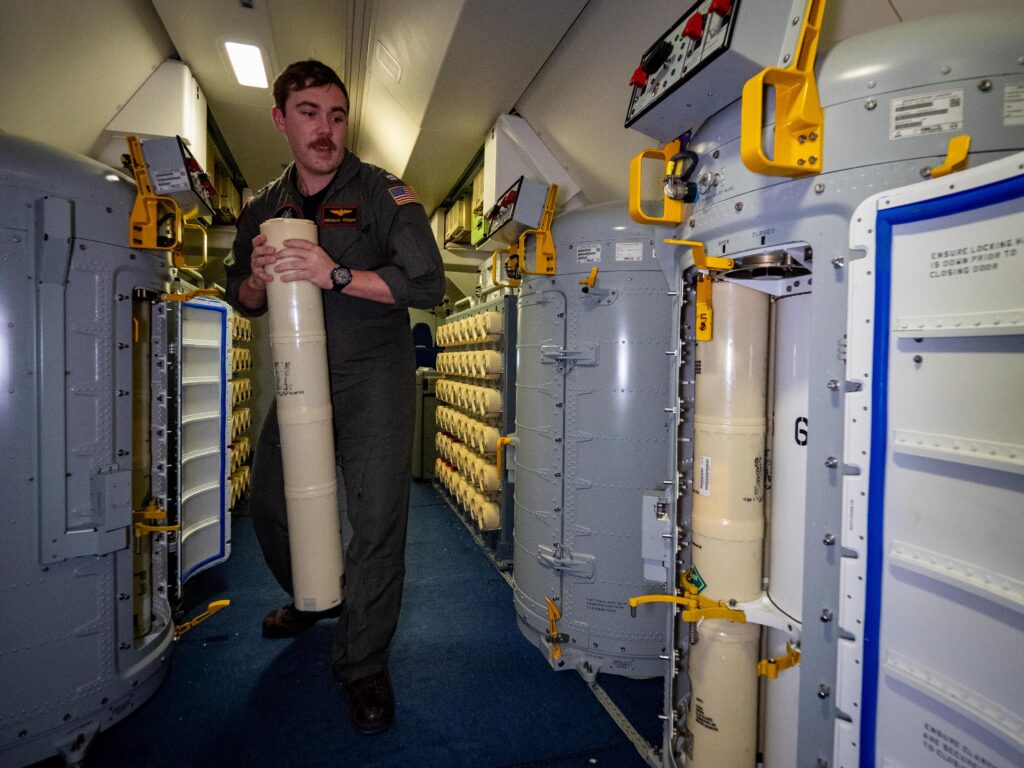
NATIONAL HARBOR, Md. — The return of great power competition, which some call a new Cold War, is a bull market for the antisubmarine warfare sonobuoy business.
Sonobuoys — expendable floating sensors fitted with acoustic receivers, transmitters or both — are the primary antisubmarine warfare sensor of U.S. and NATO maritime patrol aircraft such as the P-8, P-3, and MH-60R. They are used to track submarines and provide locating positions for attack.
Eric Webster, Ultra’s president of Sonobuoy Systems, told Seapower April 4 at Sea-Air Space 2022 that his company — allied in a joint venture, ERAPSCO, with Elbit’s Sparton sector — is producing 200,000 sonobuoys per year, a level approaching the number built annually during the mid-1980s in the midst of the Cold War, when U.S. Navy and allied ASW expended thousands of sonobuoys to track Soviet submarines.
Last year, Ultra (Booth 327) “built more sonobuoys than ever before,” Webster said, noting the Navy may order more “above max quantity” of the current contract. He said the joint venture has built more than seven million sonobuoys for U.S. and international partners.
The increased orders reflect efforts by the U.S. and allied and partner navies and air forces to increase their capabilities and capacity to counter the Russian and Chinese submarine threats.
Ultra builds four types of sonobuoys and is developing the SSQ-125A version, which has a more powerful sound source than the SSQ-125 for transmission at submarines. Sonobuoys range in unit cost from $800 to less than $10,000, depending on type.
Ultra, headquartered in London, bases its sonobuoy business in Fort Wayne, Indiana. The company also produces receivers for signals from sonobuoys. The company is working to better interconnect its receivers with the broader network of platforms and sensors.
“The future is about integrating data … to achieve a shorter kill chain,” Webster said.
- SECNAV: Frigate Delay Due to ‘Atrocious’ Shipyard Worker Retention - May 16, 2024
- SAIC Advances Scalable Open-Architecture Counter-UAS Systems - May 9, 2024
- Navy’s Triton UAV to Provide Targeting for LRASM - May 2, 2024



